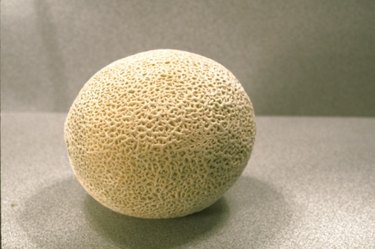
Cantaloupe rinds can be added to a compost pile along with other plant-based yard and food wastes.They'll break down within a few weeks or months to make a rich soil amendment. Add a few cantaloupe rinds per week only to the compost heap because the rinds are bulky and take longer to decompose than other materials.
Benefits
Video of the Day
Cantaloupe rinds add phosphorus to the compost as they break down, although the rinds take a little longer to decompose than soft plant materials. Cut the rinds into 2-inch pieces to speed up the process. Avoid adding cantaloupe seeds to the pile, though. They may not decompose and may grow in unexpected places in your garden.
Video of the Day
Materials
To ensure a quickly composting pile, add other wet and dry ingredients to the pile in addition to cantaloupe. Wet materials include untreated lawn clippings, yard waste, fruit and vegetable scraps, pet bedding and egg shells. Dry materials include shredded, non-glossy paper, dryer lint, coffee grounds, leaves, straw and hay. Some materials, such as pine needles, wood chips, corn cobs and nut shells are safe to compost, but take a long time to decompose. Avoid putting grease, meat, bones, cat litter, charcoal briquettes and glossy paper in the compost. These products may attract vermin, cause disease or contain toxins.
Collecting Rinds
Keep a bucket under the kitchen sink to collect cantaloupe rinds and other kitchen scraps. Cut the rinds up and place them in the bucket for temporary storage. Empty the bucket into the outdoor compost bin at least every other day to avoid odors.
Considerations
Compost leftover cantaloupe fruit, too, as well as watermelon and pumpkin rinds. Process the compost until it is dark and rich, with an earthy smell. Screen the compost before use and remove any cantaloupe rinds that haven't decomposed completely.